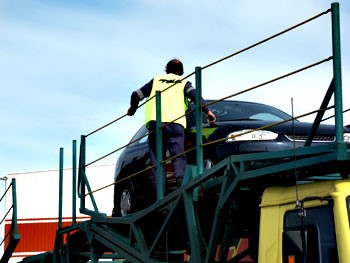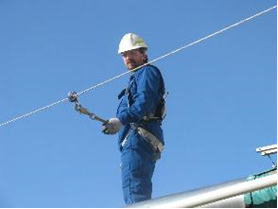Assessment RIIWHS204D Work Safely at Heights
Quiz Summary
0 of 29 Questions completed
Questions:
Information
You have already completed the quiz before. Hence you can not start it again.
Quiz is loading…
You must sign in or sign up to start the quiz.
You must first complete the following:
Results
Results
0 of 29 Questions answered correctly
Your time:
Time has elapsed
You have reached 0 of 0 point(s), (0)
Earned Point(s): 0 of 0, (0)
0 Essay(s) Pending (Possible Point(s): 0)
Categories
- Not categorized 0%
- 1
- 2
- 3
- 4
- 5
- 6
- 7
- 8
- 9
- 10
- 11
- 12
- 13
- 14
- 15
- 16
- 17
- 18
- 19
- 20
- 21
- 22
- 23
- 24
- 25
- 26
- 27
- 28
- 29
- Current
- Review
- Answered
- Correct
- Incorrect
-
Question 1 of 29
1. Question
Match the descriptions of Legal Requirements to each type.
Drag the following statements into the table below, placing them beside the correct term. Refer to slide 2-2.1
Sort elements
- Laws to protect the health, safety and welfare of people at work
- These are subordinate to the Acts and give more information on particular parts of the Act
- Are practical instructions on how to meet the terms of the Law
- Gives you the minimum levels of performance or quality for a hazard, work process or product
-
Acts
-
Regulations
-
Codes of Practice
-
Australian Standards
CorrectIncorrect -
Question 2 of 29
2. Question
What should you refer to prior to undertaking a Working at Heights activity? Select one correct answer. Refer to slide 2-2.14
CorrectIncorrect -
Question 3 of 29
3. Question
How might a Safe Work Method Statement (SWMS) assist to fulfil a safety objective? There are 5 correct answers only, select the correct five answers. Refer to slide 2-2.10
CorrectIncorrect -
Question 4 of 29
4. Question
With regard to completing a SWMS, breaking the job down into logical steps taking into consideration what is required to be achieved by the task is the first step in filling out a work method statement? Refer to slide 2-2.11
CorrectIncorrect -
Question 5 of 29
5. Question
Before you start any work or planning, what aspects and basic steps can you take in assessing the work environment? Refer to slide 2-2.13
CorrectIncorrect -
Question 6 of 29
6. Question
Whilst planning the job what site information will help in determining how the job is performed? Select 5 correct answers. Refer to slide 2-2.14
CorrectIncorrect -
Question 7 of 29
7. Question
Match the meanings of Hazard and Risk to the descriptions provided. Refer to slide 2-2.15
Sort elements
- Is the outcome of an unwanted event e.g. that chance of a hazard hurting someone else
- A hazard is a thing or situation that cases injury, harm or damage
-
Risk
-
Hazard
CorrectIncorrect -
Question 8 of 29
8. Question
Correctly match the Hierarchy of Control sequence with 1 being the highest level of control and 3 being the lowest. Refer to slide 2-2.24
Sort elements
- Elimination
- Substitution
- Isolation
-
Level 1
-
Level 2
-
Level3
CorrectIncorrect -
Question 9 of 29
9. Question
Match the correct description of equipment type, the safety mode and construction materials to the diagrams provided to demonstrate your understanding of each equipment type. Refer to slide 3-3.1 to 3.18
Sort elements
- Edge protection
- Fall Arrest System
- Fall Protection Covers
- Ladder/Ladderway
- Heights Harness and Lanyard
- Scaffolding
- Travel Restraint
CorrectIncorrect -
Question 10 of 29
10. Question
Referring to the Working at Heights ‘Hierarchy of Control Model’ from your learner’s guide, drag and drop each control level with the top position being the highest level of control, down the bottom position being the lowest level of control. Refer to slide 3-3.19
-
Fall Restraint
-
Admin
-
Elimination
-
Passive Fall Protection
-
Fall Arrest
View Answers:
CorrectIncorrect -
-
Question 11 of 29
11. Question
When should guard rails (TOP, MID AND TOE BOARD) be used? Read each answer before selecting your choice. Refer to slide 4-4.1
CorrectIncorrect -
Question 12 of 29
12. Question
Who can install safety systems and equipment? Refer to slide 4-4.7
CorrectIncorrect -
Question 13 of 29
13. Question
How should all anchor points be positioned on a fall-arrest system? Refer to slide 4-4.8
CorrectIncorrect -
Question 14 of 29
14. Question
What precautions may you take If a static line passes around a column, corner, or other sharp edge? Refer to slide 4-4.9
CorrectIncorrect -
Question 15 of 29
15. Question
How can tools and materials be kept secured inside a work platform? Refer to slide 4-4.15
CorrectIncorrect -
Question 16 of 29
16. Question
How should ladders be set up. Refer to slide 4-4.16
CorrectIncorrect -
Question 17 of 29
17. Question
Whenever using a portable ladder, always keep the ladder at a 3:1 vertical to horizontal ratio (e.g. 3m up = 1m out). Refer to slide 5-5.1
CorrectIncorrect -
Question 18 of 29
18. Question
What should you do if you experience changed conditions or need to make changes to the system being used?
Consider the following 4 statements:
- You should regularly monitor the work area for changing conditions or new potential hazards.
- Periodically check all equipment during work to ensure that it remains safe, effective and undamaged
- Change is inevitable, continue to work and avoid making any changes to the system
- Get the job done before the weather changes
Select 1 correct answer from the following. Refer to slide 5-5.13
CorrectIncorrect -
Question 19 of 29
19. Question
Why should you keep all tools and equipment in a toolbox, not lying on the ground? Select 3 correct answers Refer to slide 5-5.14
CorrectIncorrect -
Question 20 of 29
20. Question
What should you do if the situation calls for a new or different safety system? Read all the answers carefully before making one selection and keep in mind that risks must be ‘As Low as Reasonably Practicable’ (ALARP) according to site procedures. Refer to slide 5-5.14
CorrectIncorrect -
Question 21 of 29
21. Question
What approach should you take when moving or handling materials and equipment? Refer to slide 6-6.1
CorrectIncorrect -
Question 22 of 29
22. Question
When do you need to check that fall protection equipment is safely adjusted to suit the work? Select one correct answer. Refer to slide 5-5.15
CorrectIncorrect -
Question 23 of 29
23. Question
Why do you need to check any hazard controls that are in place?
CorrectIncorrect -
Question 24 of 29
24. Question
Who do you need to consult with to dismantle any safety systems? Refer to slide 6-6.1
CorrectIncorrect -
Question 25 of 29
25. Question
Why do you need to make sure all rubbish is collected, sorted, removed or recycled correctly? Select 2 correct answers. Refer to slide 6-6.2
CorrectIncorrect -
Question 26 of 29
26. Question
What steps should be taken upon identifying work defects, tool and equipment damage. Select three correct answers. Refer to slide 6-6.3
CorrectIncorrect -
Question 27 of 29
27. Question
Which of the following hazards are relevant during tidy up of the site? Select 4 correct answers. Refer to slide 6-6.4
CorrectIncorrect -
Question 28 of 29
28. Question
What should you do with wastes and documentation if a heights activity is incomplete at the end of a day? Refer to slide 6-6.4
CorrectIncorrect -
Question 29 of 29
29. Question
Barricading, signage and safety delineation remains in place until work area is fully completed. Refer to slide 6-6.4
CorrectIncorrect






